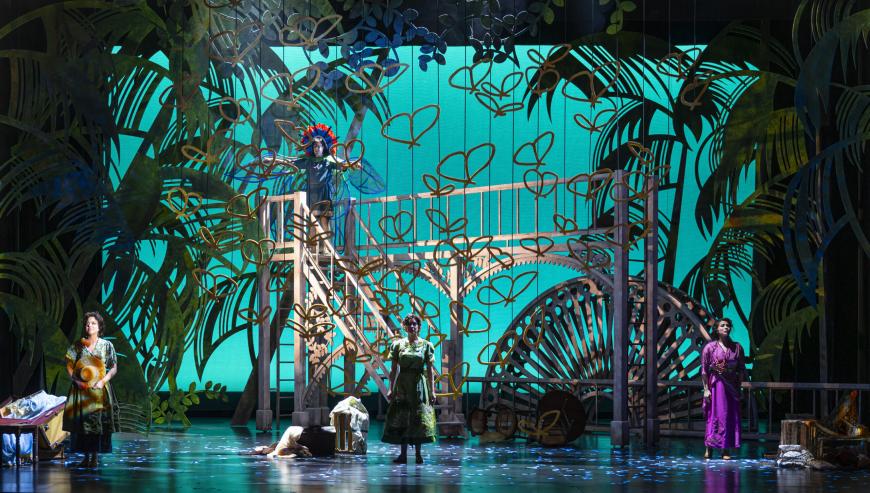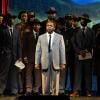
Stage director David Radamés Toro said that, of all things, it’s his background in mime that has helped him while working on the Northern California premiere of Héctor Armienta’s 2022 opera Zorro, which is set to run April 19 – May 4 at Opera San Jose.
Mime forces you as a performer to boil down your point to its essence, Toro explained, which happens to be a great approach for opera, too.
Consider how reactions in mime are divided into four beats: “hey” (something happened), “what the … ?” (noticing it), “huh” (thinking about it), and “oh” (resolution). “You can vary them,” Toro told SF Classical Voice on the phone from Arizona, where he teaches in the School of Music, Dance and Theatre at Arizona State University. “But having those four distinct beats allows clarity for the audience.”
And Toro is keen on productions that everyone can understand. Hence why he’s interested in directing operas that reach out to new audiences, particularly Spanish-language works like Zorro and Cruzar la Cara de la Luna, the latter of which he staged for Austin Opera in February 2024.

“Many years ago, I was privileged to assist on an opera called El Pasado Nunca se Termina, which is all about Mexican American and Mexican heritage. From there, I knew we needed more Latino American stories,” Toro said. “Latino Americans are part of American culture. As Zorro attests, the Spanish Empire’s presence in the Americas predates the United States. The Western half of the United States is a Latino culture, which is an American culture.”
When OSJ asked if he could direct Zorro, he immediately agreed in spite of his busy schedule. “This is exactly what I want to be doing,” Toro said.
Zorro is set in Los Angeles in the early 1800s, when the area was still a Spanish colonial pueblo. The title character is, of course, the nobleman behind a black mask, who, in bouts of sword fighting and romance, stands up for the poor and enslaved.
“Not a lot of people really focus on Spanish Imperial America,” Toro went on, explaining how a caste system was one inextricable aspect of this era. “You have the Spanish, you have the mestizo, and then you have the Tongva, the Indigenous Californians. And how often do you get to tell these stories, these histories, along with beautiful, fun music?”
Opera companies have underestimated the appeal of Spanish-language opera, Toro said, and he sees a market and need for it.
OSJ General Director Shawna Lucey agrees. This is her company’s second Spanish-language production, following Daniel Catán’s Florencia en el Amazonas last spring.
Lucey recounted how when she was interviewing for her current position, she and OSJ Music Director Joseph Marcheso discussed operas they felt strongly about producing.
“I said Florencia, and he almost fell out of his chair because he was dying to do it,” she remembered. “We both passionately believe in the piece, and we believe it belongs in the American canon of modern operas.”
Lucey said that OSJ audiences loved Florencia too and noted that the production brought in audience members who had never been to the opera before and were happy to find the experience accessible. She added that many members of Florencia’s design team were Latino, as was much of the cast. The same is true of Zorro.

Lucey explained that she wanted to work with Armienta, who was born and raised in Los Angeles but now lives in Oakland and directs San Jose’s Opera Cultura. All of the collaboration that has gone into Zorro highlights what the city of San Jose has to offer.
“As a transplant here, I am thrilled all the time with the public art and the vibrant and thriving art scene” she enthused. “It’s not only the heartbeat of downtown San Jose, but it is a real economic driver.”
Lucey said that the character of Zorro, which was something of precursor to American comic book superheroes, captures the imagination in the same way that Black Panther and Spider-Man do. To these ends, OSJ is partnering with the city library system to promote the opera.
“We’re presenting, I think, at almost 20 local libraries here in San Jose, free for the public,” she said. “Kids can really get into the superhero vibes but also the opera itself.”




